Taxus baccata
Anative European tree, more often seen clipped as a hedge and as topiary. The foliage is toxic to many browsing animals (cattle, horses and sheep) and so in rural areas, you’ll only see this growing in church yards, gardens and some native stands of pure yew forest like the wonderfully ancient and slightly spooky Kingley Vale near Chichester in West Sussex. Because it’s native, it’s been used for centuries and is probably considered the poshest of all plants for topiary.
It needs pretty well drained soil (sandy or chalky is particularly good) but if on clay, it’s a good idea to mound plant (plant high) and create a higher soil level with lots of mulch or any organic stuff you can get your hands on. It has a reputation for being slow growing (probably encouraged by the fact it’s very long lived) but in ideal conditions (light sandy soil) it can grow much quicker.
As with all topiary, the more often you clip it, the quicker you’ll get what you want, the denser it becomes and the better it looks. It’s incredibly tough, can grow in sun or shade and – as with many coniferous plants – if exposed to cold winter winds and ultra-violet (from the sun), it becomes bronze rather than green. The green returns in the summer or you can clip in early March and reveal the nice green foliage lurking beneath. If the plant is in shade (protected from the ultra-violet), the foliage will remain green in the winter.
Showing all 9 results
-
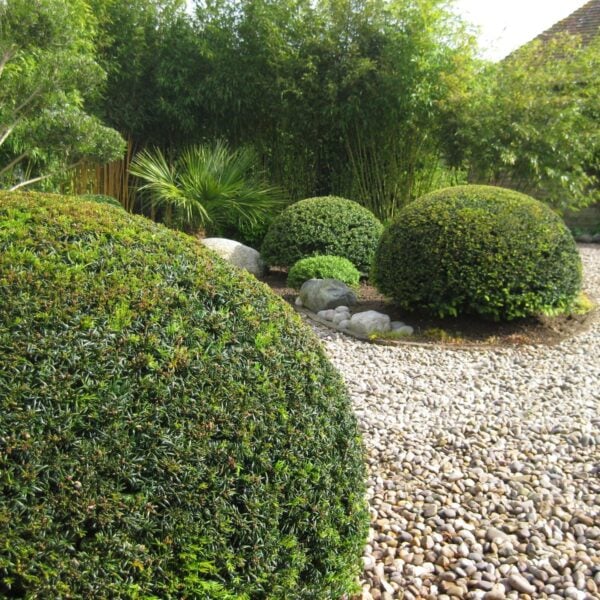
From 97.50
Taxus baccata – Balls Yew
-
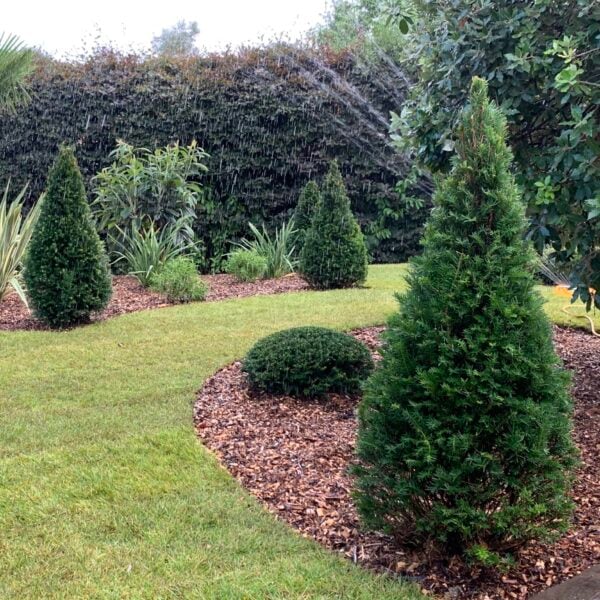
From 144.00
Taxus baccata – Cones Yew
-
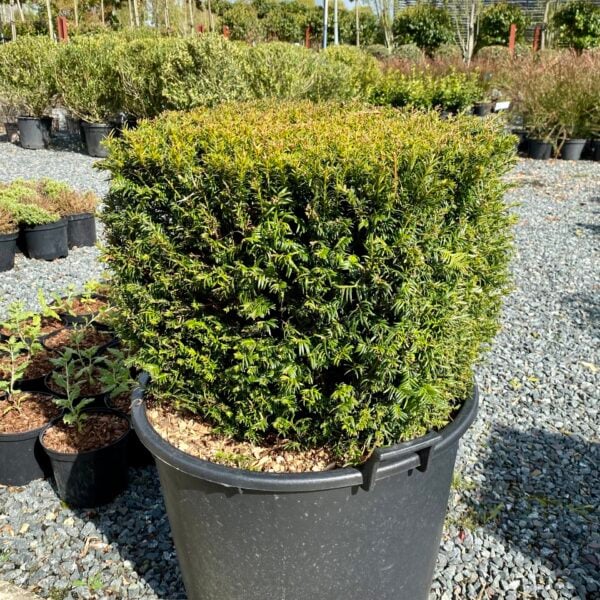
From 255.00
Taxus baccata – Cubes Yew
-

From 195.00
Taxus baccata – Multi Stems Yew
-
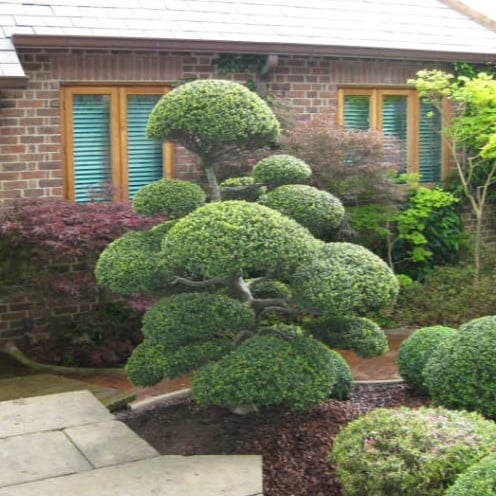
From 127.50
Taxus baccata – Niwaki Yew
-
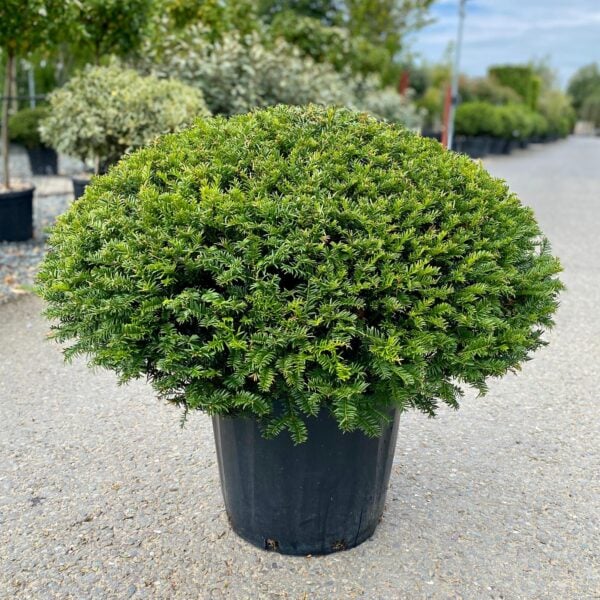
From 255.00
Taxus baccata – Pillows Yew
-
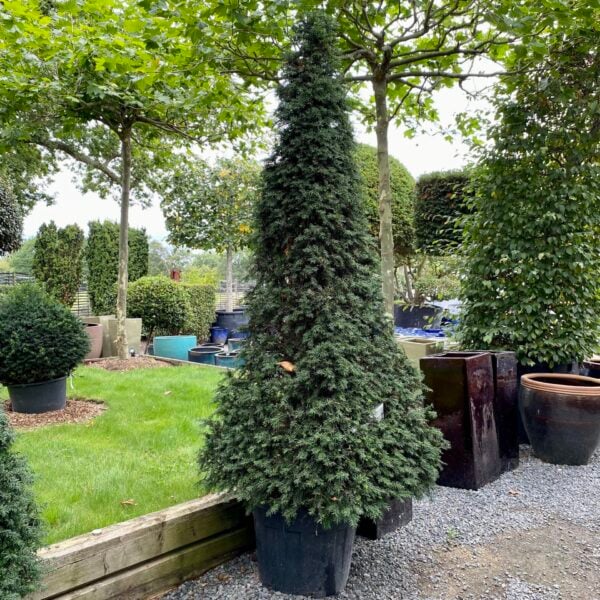
£895.00
Taxus baccata – Pyramids Yew
-
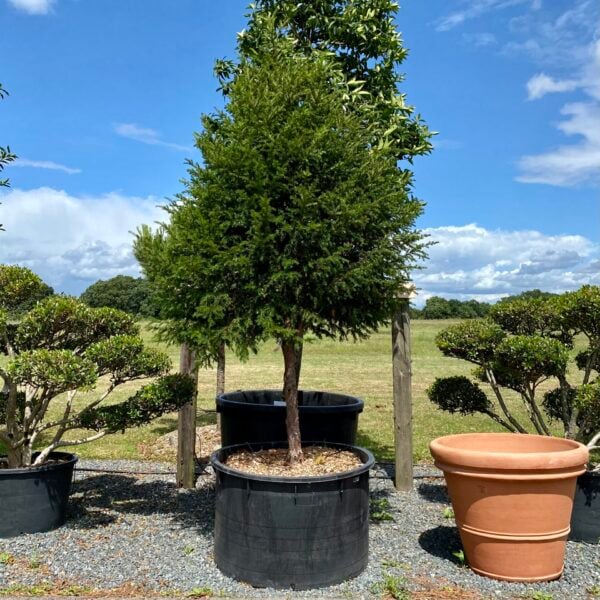
From 395.00
Taxus baccata – Standards Yew
-

From 255.00
Taxus baccata – Topiary Yew
Taxus baccata - Further Plant Information
A word about yew hedges: It’s well understood that generations of hedge clippers allow a hedge to get wider and wider. They think they’re clipping the sides (this only applies to the sides, never the top) at the same width they did it the previous year but they’re almost certainly not. We’ve seen paths in grand old gardens with yew hedges either side that once could take three people walking side by side quite comfortably. Eighty years later, one person can get down the path – sideways. It sounds ridiculous but it really does happen. With most hedges (Beech, Hornbeam, Privet, Laurel), you can just cut it back hard to where it should be and all will be well. Do the same with yew and you’ll reveal lots of dead twigs which probably won’t shoot. Stick your head inside an overgrown hedge and see the epicormic growth trying to grow on the main trunk – and there’s your clue. Give that struggling epicormic growth some light and it’ll go berserk. Yew will only regenerate from fairly meaty wood – not little twiggy bits. So the answer to an overgrown yew hedge is a bit radical; you’ve got to cut it right back to the trunk and let it start again. We’ve done remedial work on lots of hedges like that and everyone finds it more comfortable to do one side at a time. Radical – but it works.
Propagated by cuttings and from seed.
N.B. When clipping several plants with the same tool, have a bucket containing a 5% bleach solution and swish your blades around for 30 seconds between plants to sterilise them. This will help avoid the chance of cross contamination of disease.
As with all woody plants, plant high, exposing as much of the taper at the base of the trunk as possible. Allowing soil to accumulate round the base of a tree can be fatal. Keep very well watered when first planted.












